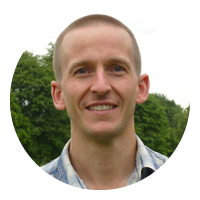Pete Edwards
University of York
- Conference: Air Quality Conference
- Presentation: Assessing and enabling low-cost sensors for UK air quality challenges: the QUANT project
- Presentation Time: Day2 09:55


Dr Pete Edwards is an Atmospheric chemist working at the Wolfson Atmospheric Chemistry Laboratories at the University of York. His research focuses on aiming to improve our understanding of the chemistry of our atmosphere, in particular relating to air quality issues. Having spent several years building high tech instruments for measuring atmospheric pollutants in both the UK and the U.S., a lot of Pete's research focus is currently aimed at assessing the viability of low-cost sensor based instruments for measuring atmospheric trace gases. Pete is the principal investigator on the Quantification of Utility of Atmospheric Network Technologies (QUANT) project, which aims to assess and enable the use of low-cost sensor technologies for use in tackling air quality challenges in UK urban environments.
Low-cost air pollution sensors have a potentially vital role to play in tackling air pollution in the UK, and globally. The high time resolution and ability to create dense networks of these devices offers a paradigm shift in the way we measure key pollutants, evaluate health impacts of air pollution exposure and assess potential solutions. The Quantification of Utility of Atmospheric Network Technologies (QUANT) project is assessing and enabling the use of low-cost sensors for UK clean air challenges. This is being achieved through the delivery of a real-world open and traceable assessment of commercial low-cost sensor devices, in a range of UK urban environments, and the development of novel data methods that enhance the information provided by these devices. QUANT is generating new data, using existing and developmental sensor technologies, and novel data methods in order to provide air pollution source information, and demonstrate the retrieval of information currently not accessible to UK air pollution networks. In this presentation I will give a brief overview of the QUANT project and some of the early findings, in particular focusing on measurement uncertainties and what this can tell us about how we can get the most out of low-cost sensor technologies.